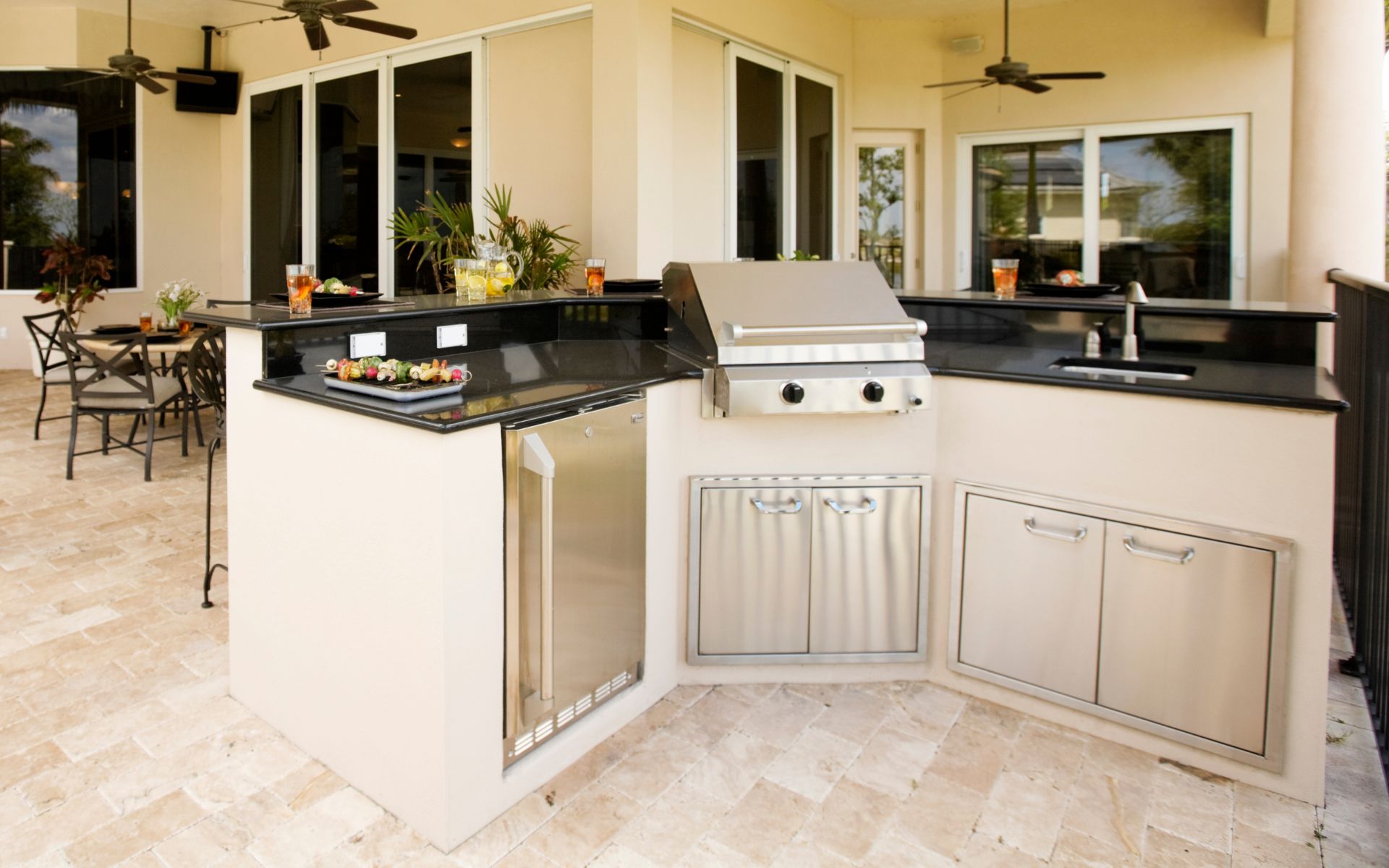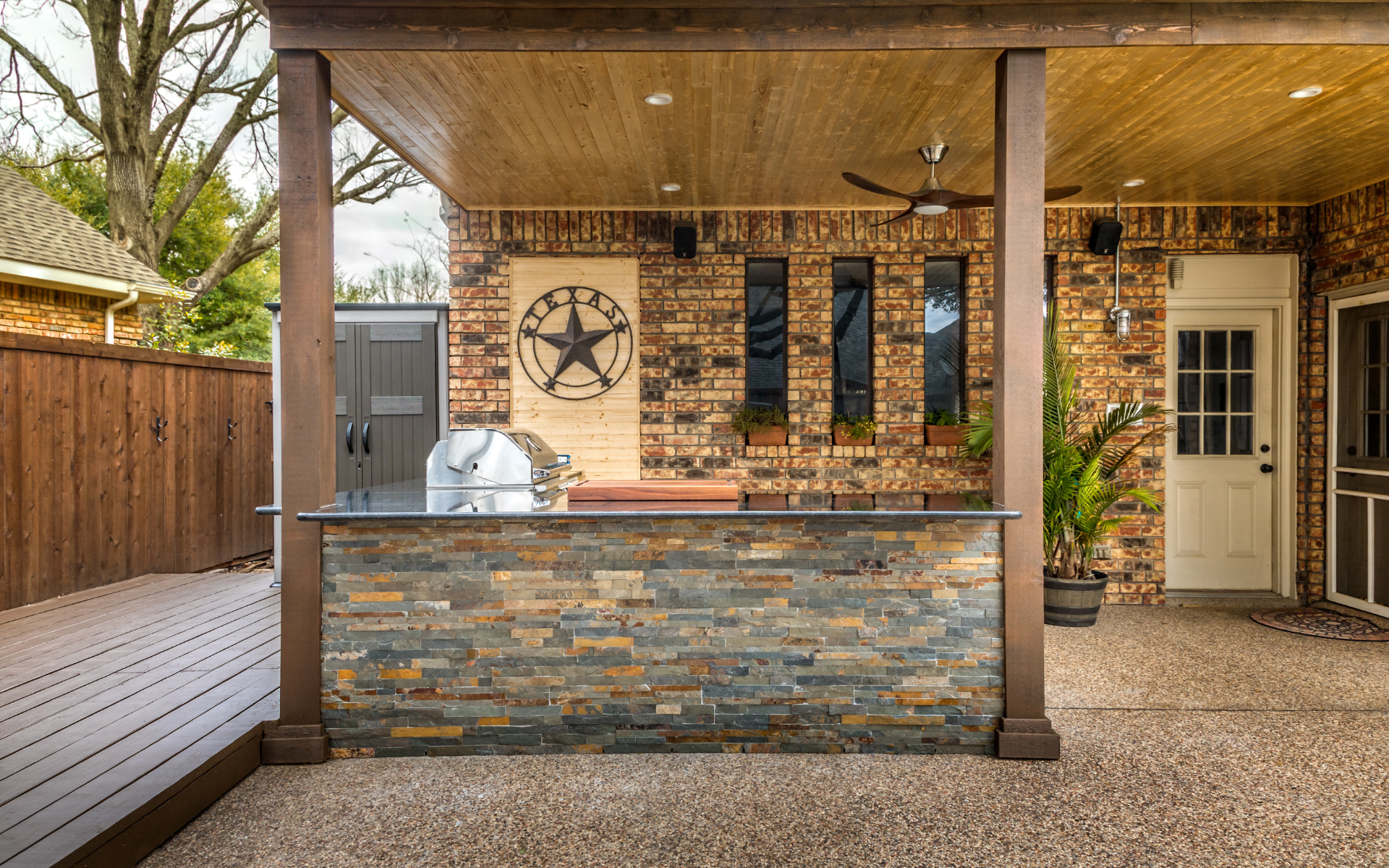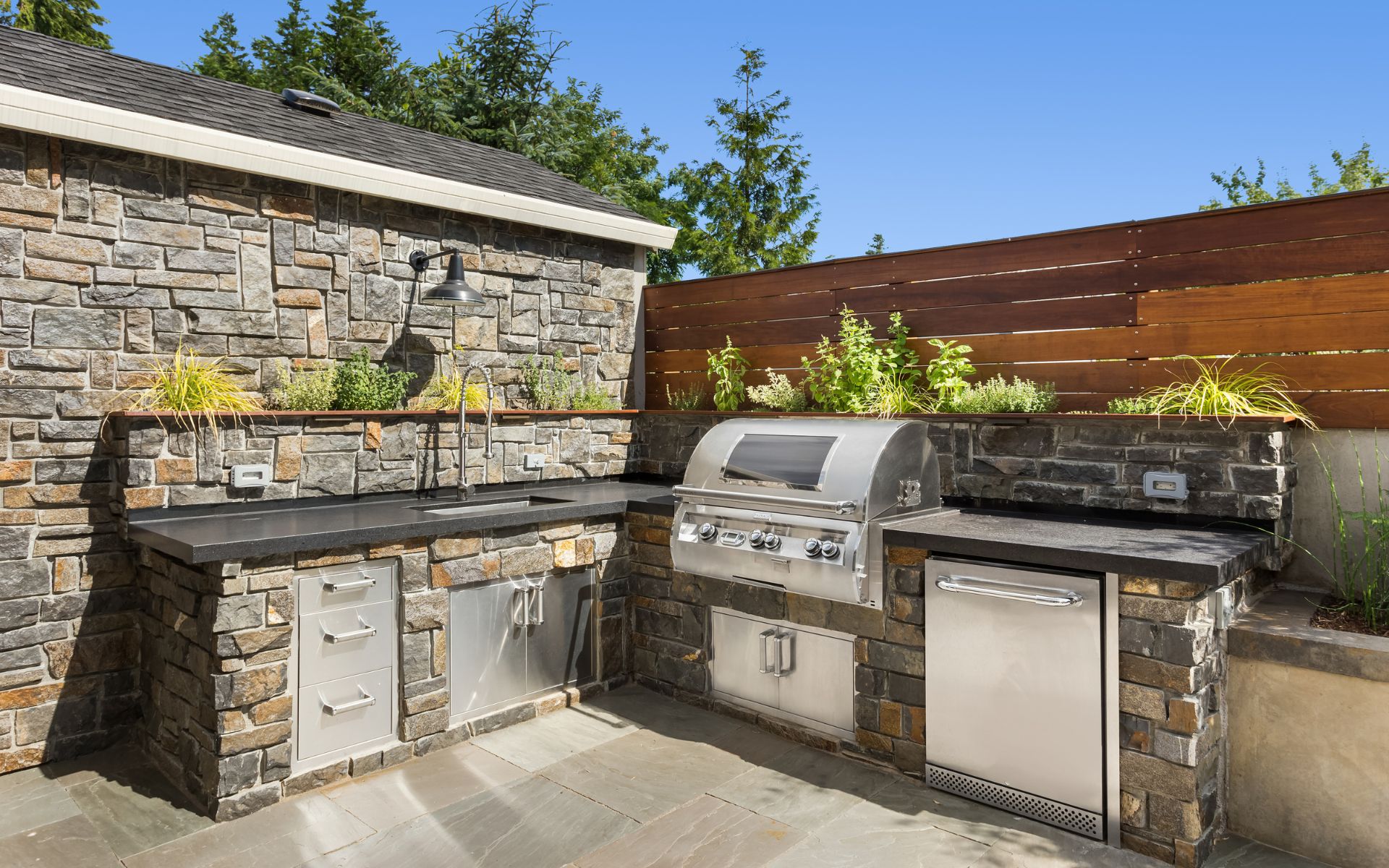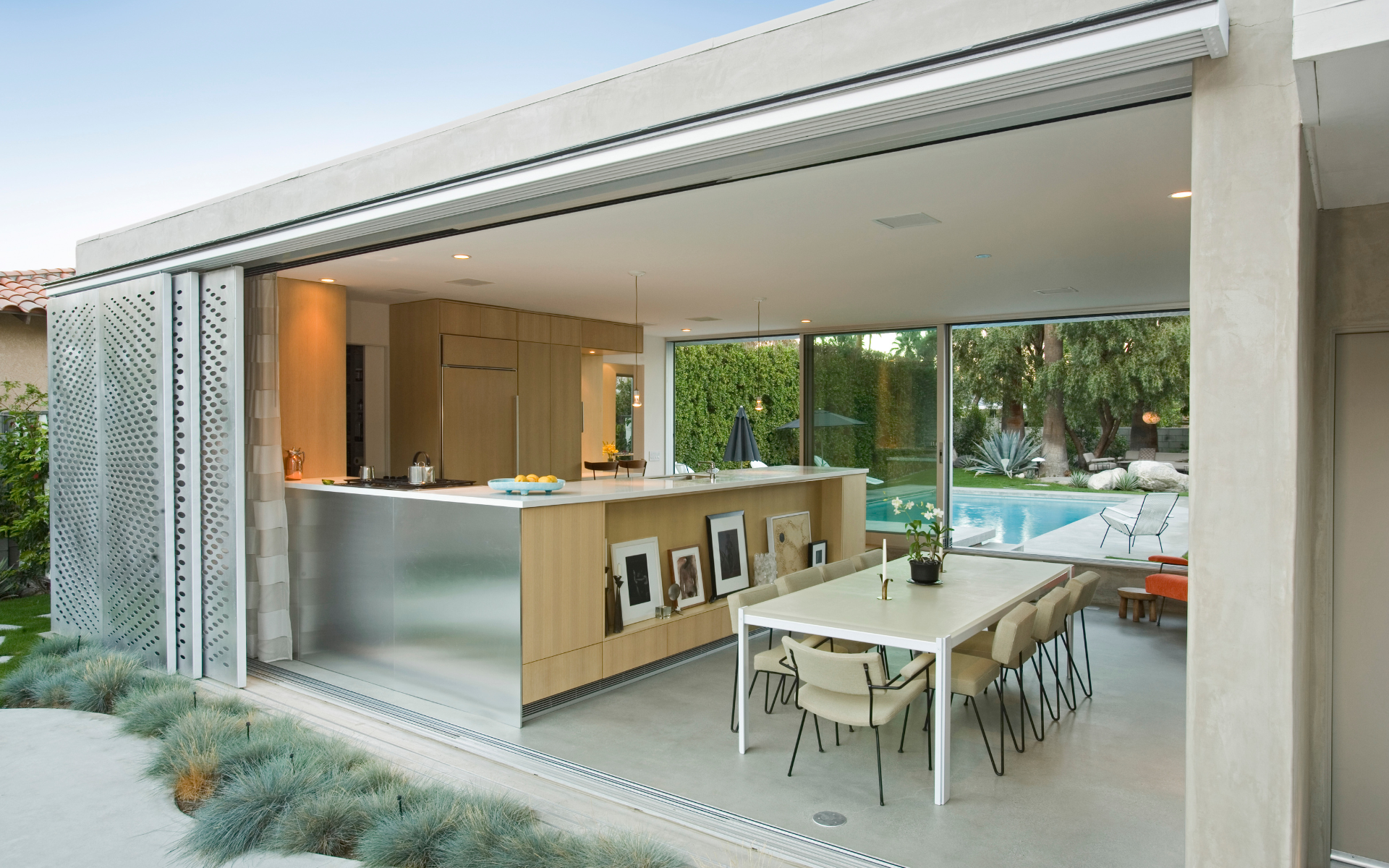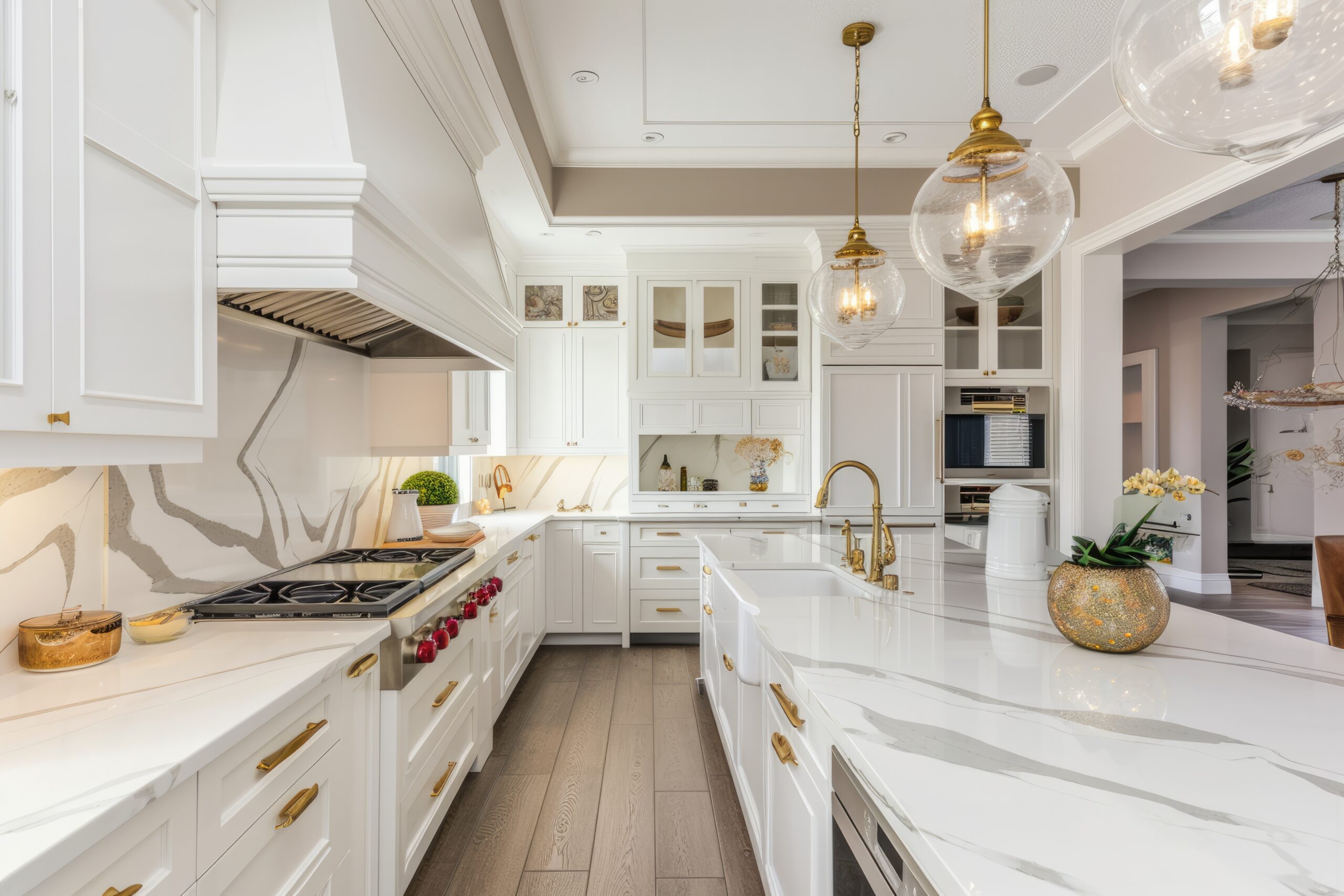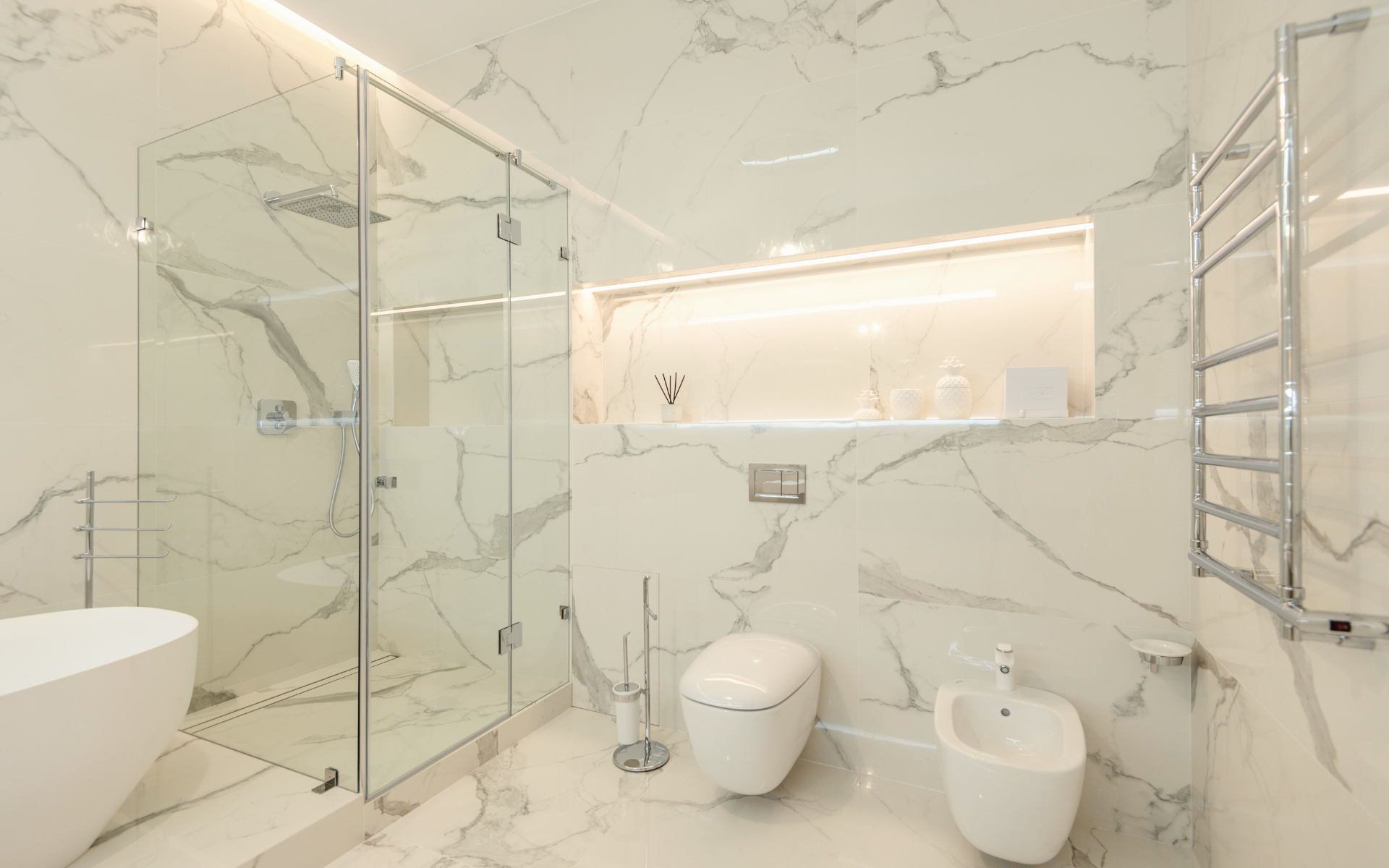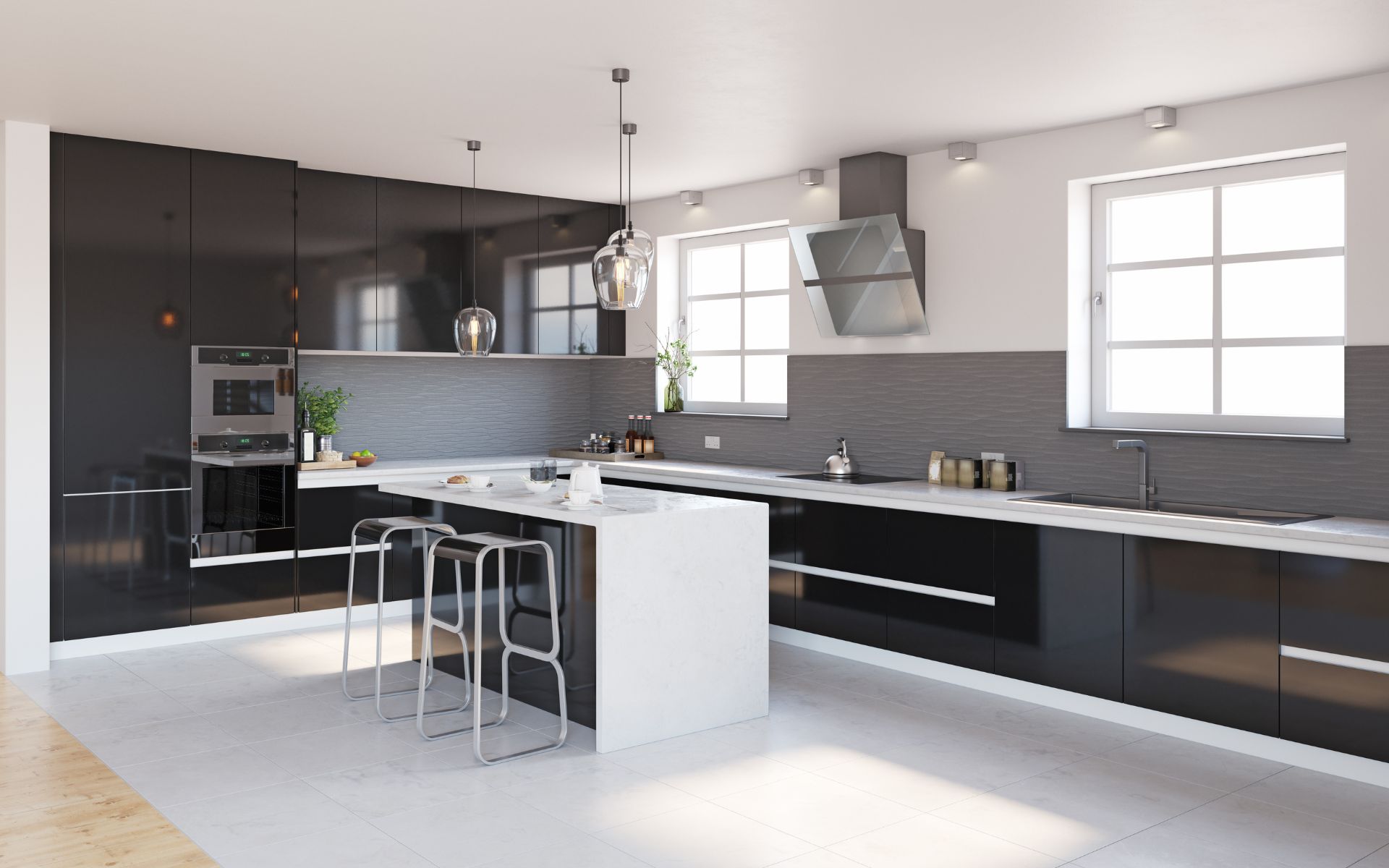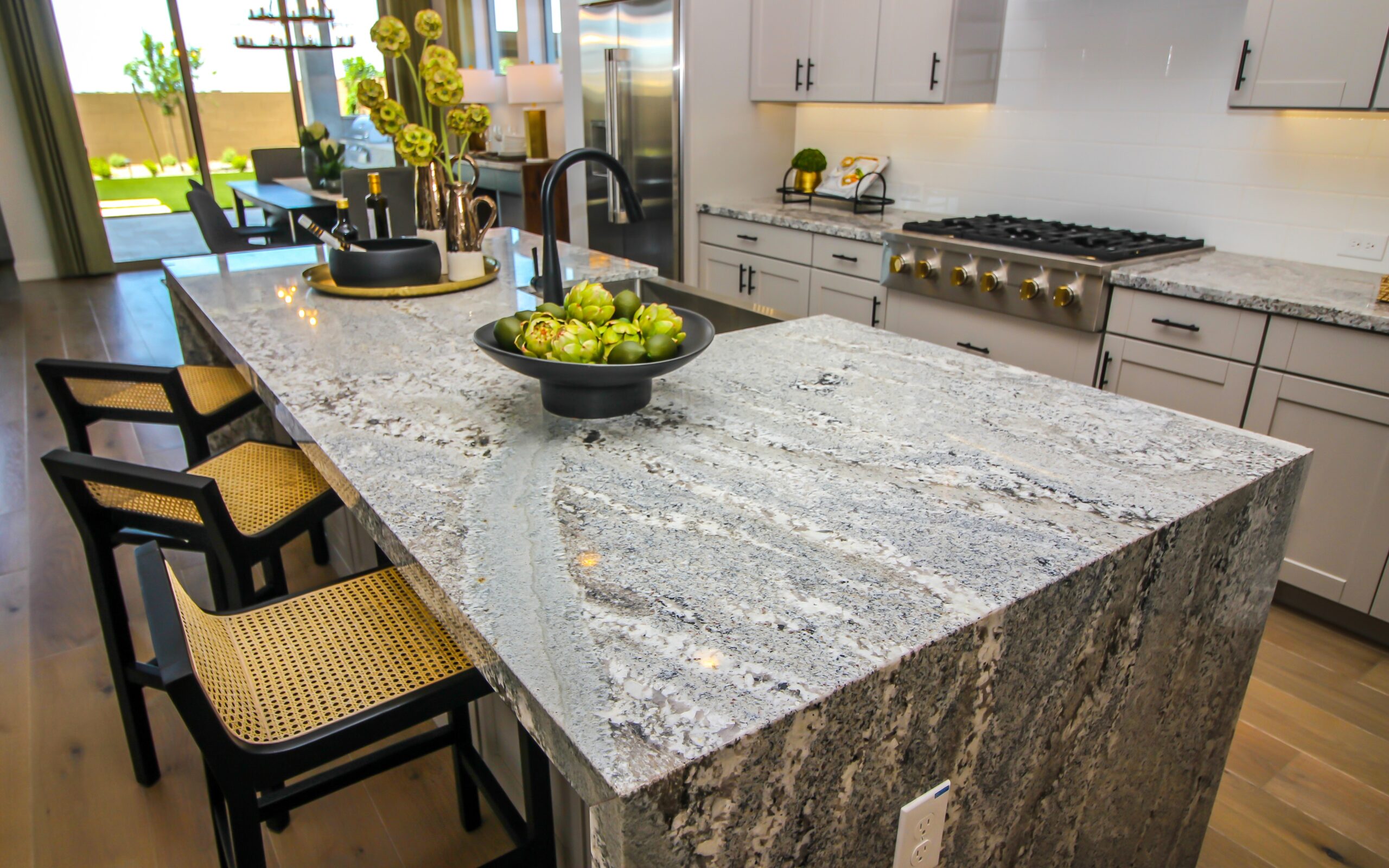Are you looking for different outdoor kitchen countertop ideas? Your outdoor kitchen countertops play a huge role in both the functionality and aesthetic appeal of your outdoor cooking and entertaining space. With the right countertop design and material, you can create your dream outdoor kitchen project living area perfect for dining al fresco, grilling up feasts, and spending quality time with loved ones.
When planning an outdoor kitchen and bath, it’s important to select countertop materials that can withstand sun, rain, and temperature fluctuations. Not all countertops designed for indoor kitchens will hold up well in outdoor environments. Making smart countertop choices ensures your outdoor kitchen provides lasting function and beauty.
This guide covers the most popular options for outdoor kitchen countertops. We’ll look at low-maintenance, highly durable, and weather-resistant materials perfect for covered outdoor kitchens. You’ll find the pros and cons of different countertop styles to help select options that best suit your project vision, usage needs, local climate, and design and aesthetic tastes.
Let’s explore creative countertop ideas to inspire your upcoming concrete outdoor kitchen countertop design!
Key Factors in Choosing Outdoor Kitchen Countertops
Kitchen countertops must withstand hot pots, sharp knives, spills, and stains even in indoor environments. When selecting materials for outdoor countertops, even more durable, low-maintenance, and weather-resistant options are crucial. Consider the following factors as you evaluate options:
Sunlight & Moisture: Countertops in outdoor kitchens require UV and water resistance. Intense sunlight can damage, stain-resistant discolor, and degrade certain countertop materials not formulated for outdoor use.
Temperature: Countertops used outdoors must allow for expansion and contraction through temperature fluctuations without cracking. Ensure the material can tolerate both hot and cold climates.
Bacteria: Porous materials can harbor bacteria growth when exposed to moisture. Nonporous countertop materials that won’t absorb liquids are better for food preparation zones.
Maintenance: Low-maintenance materials that don’t require special sealants or frequent deep cleaning are ideal for busy outdoor cooking areas.
Aesthetics: While durability comes first, outdoor countertop materials also provide options to match your preferred style from rustic concrete to polished stone.
Keep these factors in mind as we explore popular outdoor kitchen countertop ideas.
Granite: Natural Stone Sturdiness
Granite remains a beloved choice both for interior and outdoor kitchen countertops. This natural stone is extremely dense and scratch-resistant. It holds up beautifully against heat, sunlight, staining and wear-and-tear. The mineral composition of granite makes it highly durable for outdoor use.
Granite comes in a range of natural colors from bold quartz flecks to subtle earthy tones. The natural patterning has rustic appeal perfect for outdoor living spaces. Granite countertops work well in covered outdoor kitchens as well as open patio designs.
The downside is granite requires yearly sealing to prevent the absorption of liquids that could lead to staining. Darker granites may get quite hot in direct sunlight. Granite costs more than concrete or tile for outdoor projects but provides timeless beauty.
Quartz: Stone Look with Less Upkeep
Engineered quartz countertops provide an appealing middle ground between the sleek look of natural stone options with fewer maintenance requirements. Made from approximately 93% ground quartz minerals and 7% polymer resins, quartz countertops boast heat, scratch, and stain resistance ideal for outdoor placement.
Quartz comes in a wide array of colors and patterns from solid hues to convincing faux-stone looks. Seams are barely noticeable. HGTV notes that quartz requires less yearly sealing than granite, resisting moisture absorption better for low maintenance.
On the downside, intense sunlight can eventually cause some fading to quartz surfaces. Quartz has less natural patina than real stone but offers comparable durability and easier care for outdoor kitchens.
Bespoke Beauty of Concrete
For DIY-friendly outdoor kitchen countertops, concrete offers an affordable material option. Concrete can be molded into any shape and customized with aggregate mixes to achieve varied textures and appearances. Concrete is highly durable and withstands outdoor elements well when properly sealed and cared for.
Concrete allows great flexibility in color, finish, and form. You can mimic the look of other high-end materials for a fraction of the cost. With concrete, you can create thick countertops perfect for outdoor grilling setups.
However, concrete requires regular maintenance and diligent sealing to resist moisture absorption and staining. Cracks can form over time. Concrete needs more frequent cleaning and maintenance versus other countertop materials. However, the cost-savings make concrete popular for outdoor projects.
Shining Allure of Stainless Steel
According to This Old House, stainless steel is one of the most durable countertop materials for outdoor kitchens. The non-porous finish resists water, food stains, and high temperatures and cleans up easily. Stainless steel comes in a range of metal finishes from mirror-polished to textured options that mimic stone.
Stainless steel countertops withstand years of use without showing wear. The durable material won’t crack in cold temperatures or weather extremes. Stainless steel offers a sleek, contemporary look for outdoor entertaining spaces.
Potential negatives include noise and condensation. Stainless steel will show fingerprints, grease stains, and mineral deposits that require proper cleaning. Despite higher costs, stainless steel provides robust performance for outdoor countertops.
Laminate’s Budget-Friendly Style
For a budget-friendly outdoor countertop, laminates like Formica offer a versatile solution. Laminate sheets consist of decorative papers fused to a particle board or wood substrate with plastic resin. Modern laminates come in hundreds of colors and realistic stone and wood-grain patterns.
Laminate countertops are affordable, easy to install, and customizable. Newly developed outdoor-grade laminates resist UV rays, heat, and moisture. The sealed finish prevents absorption and bacteria growth. Laminates aren’t prone to scratching like real stone.
However, laminate does have a shorter lifespan versus stone and metal options. The edges can swell and delaminate over time when exposed to standing water. Laminate works best in covered outdoor kitchens protected from sun exposure and heavy weathering.
Elegance of Natural Stone
Beyond granite, natural stone countertops offer distinctive visual appeal for outdoor kitchens. Slate, limestone, and bluestone come in a range of earthy colors that complement outdoor living spaces. Natural stone has heat-resistant and nonporous properties suitable for outdoor placement.
Each stone type ranges in density, porosity, and required maintenance. Limestone is more a porous material than granite and needs diligent sealing. Bluestone offers an aesthetic resembling concrete for a natural yet modern look. More rustic stones like flagstone or sandstone pair well with casual outdoor spaces.
The cons of natural stone revolve around required sealing, cost, and fragility concerns. Softer stones may scratch or stain more readily than granite. Check density ratings when selecting an outdoor-appropriate natural stone option.
Tailored Style with Tile Countertops
Ceramic, porcelain, and natural stone tiles make an intriguing option for DIY countertops. Tiles come in tons of sizes, colors, shapes, and patterns. Mix and match tiles to create custom countertop surfaces. Use mosaics, geometric layouts, or classic square tiles.
Tile countertops offer style flexibility from a sleek stone look to the handmade charm. The right grout seals out moisture absorption. Porcelain tiles are extra durable for outdoor use. Tile layouts disguise seams between pieces.
Drawbacks include the potential for cracked grout and missing tiles over time. Tiny grout lines can trap debris and stains. Natural stone tiles require more sealing than porcelain. Overall tiles make a great choice for creativity and customization in outdoor and indoor kitchen countertops.
Design Inspiration: Creative Outdoor Kitchen Countertop Ideas
Rustic Flagstone
Irregular flagstone pieces in earthy hues create countertop surfaces with organic, rustic texture well-suited to outdoor living spaces. The various sizes and shapes have old-world, handmade appeal. Leave visible gaps between stones or use dark grout to highlight the natural shapes. Pair with a stone sink, grill, and dining tables for a harmonious design.
Geometric Tile
Handmade encaustic cement tiles, a Moroccan tile influence, look bold and graphic in black, white, and gray. Use tiles in a mix of geometric shapes for lively contrast. The pattern instantly elevates an outdoor kitchen. Durable and low-maintenance, patterned tile makes a striking countertop choice.
Poured Concrete
Customize poured concrete countertops by choosing colors and aggregate mixes like sea glass or stones. The thick, molded concrete boards offer seamless surfaces. A concrete countertop mixed with sizable stones or pebbles boosts textural appeal. Concrete’s heat-resistance suits grilling stations. Add iron accents and outdoor lanterns for industrial flair.
Blue Quartz Veining
Vivid blue and gray swirls through this engineered quartz countertop, mimicking natural stone with added color pop. The quartz offers durability for outdoor placement but easier maintenance than a real, granite countertop. The bright blue veining and subtle sparkle give life to an outdoor kitchen. Coordinate with blue cabinets, pendant lights, and barstools.
Wood-Look Porcelain
These wood-look porcelain planks offer the visual interest of natural wood paired with the resilient properties of tile. The mix of brown and gray tones and realistically painted knots and grains resemble reclaimed boards. The porcelain tile material doesn’t stain or etch and withstands weather extremes. Use to add warmth to an outdoor room.
Stainless Steel Columns
Incorporate visually intriguing stainless steel columns in a supporting wall or island structure. The gleaming vertical accents contrast beautifully with the surrounding wood tones. Take advantage of stainless steel’s imperviousness to weather by using it creatively within the overall design beyond just countertops.
Limestone Brick Pattern
Soft gray-blue hues of this limestone tile lay in a brick pattern for the countertop surface. The stone’s naturally textured and pitted surface has visual appeal. Durable and heat-resistant, these limestone countertops offer an elegant stone option. Keep the lines between stone tiles minimal with tight grout lines in a matching gray-blue grout.
Mixed Granite Inlay
Using two complementary slabs of granite, such as beige and gray or black and white, cut inlay strips to alternate colors and patterns when joining. The inlaid strips create a striking, unique countertop perfect for making your outdoor kitchen design stand out with custom granite fabrication.
Achieve Outdoor Kitchen Countertop Success
The key to a functional, sensational outdoor kitchen lies in selecting the right countertop materials to withstand heavy use and outdoor conditions. Take into account climate, usage, maintenance, and aesthetics when weighing outdoor countertop ideas for kitchen remodeling, which is against your project vision. Many top countertop options today balance durability, easy care, and design appeal.
Whether you select classic granite, sleek stainless, or textural tile, choose materials formulated specifically for exterior use. Carefully seal, clean, and maintain your outdoor countertops. Add function and beauty to your outdoor space with a creative countertop design suited to alfresco cooking and entertaining.

